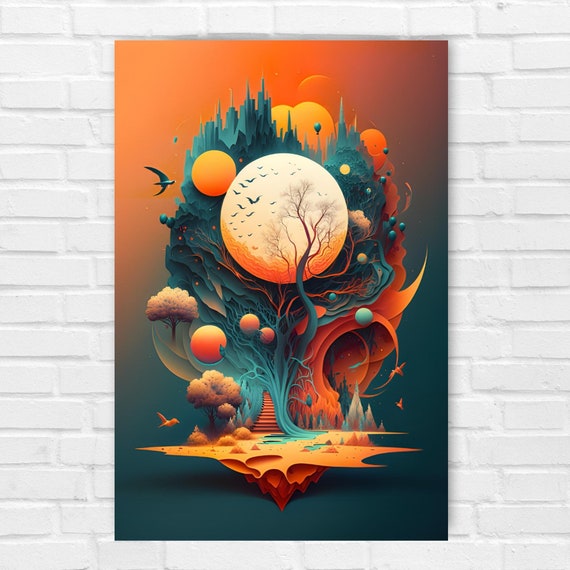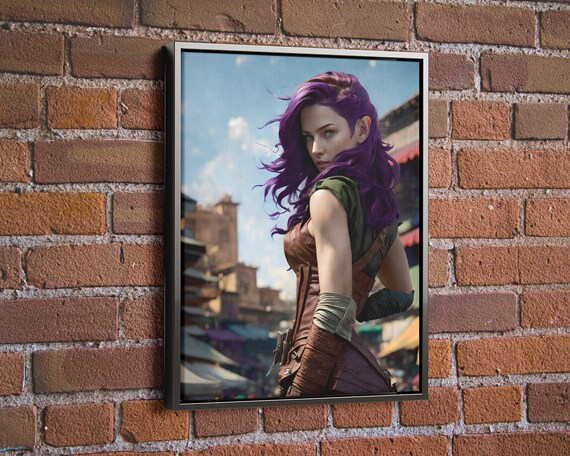Artificial Intelligence (AI) has increasingly found its way into the art world, creating a fusion of technology and creativity. This integration has sparked both excitement and controversy, particularly within the realm of online marketplaces like Etsy. The platform’s recent policy updates on AI-generated art have ignited debates among artists and consumers alike. This article delves into Etsy’s AI art policy, exploring its implications, the diverse perspectives surrounding it, and my own opinion that AI, while unable to replace human imagination, can significantly enhance and enable it.

The Emergence of AI Art on Etsy
Etsy, a marketplace known for its handmade and vintage items, has embraced AI-generated art, reflecting a broader trend in the creative industries. The platform now permits the sale of AI-generated art, provided sellers disclose the use of AI in their creative process. This transparency ensures that buyers are aware of AI’s role in the artwork they purchase. However, Etsy has drawn a line by prohibiting the sale of AI prompts, which are considered essential to the creative process.
TechCrunch on Etsy’s AI Policy
TechCrunch highlights the mixed reactions Etsy has received from its community. Traditional artists have expressed concerns over AI art mimicking human styles and potentially undermining the value of human-created art. Despite these concerns, Etsy has maintained its stance, arguing that AI-generated art represents a new frontier in creativity. The platform believes that AI can coexist with traditional methods, offering new possibilities for artistic expression.
PCMag: Etsy’s Commitment to Transparency
PCMag reports that Etsy has doubled down on its pro-AI art policies despite calls for a ban on AI-generated art. The platform’s commitment to transparency is evident in its requirement for sellers to label AI-generated items clearly. This move is intended to help buyers make informed decisions and maintain trust in the marketplace. Etsy’s policies aim to balance innovation with ethical considerations, ensuring that AI’s role in art is transparent and accountable.
Entrepreneur: Clarifying Etsy’s Standards
Entrepreneur provides insight into Etsy’s clarification of its new standards. The platform emphasizes that while AI-generated art is allowed, sellers must be upfront about the involvement of AI. This requirement aligns with Etsy’s broader commitment to ethical practices and consumer transparency. The platform aims to protect the interests of both artists and buyers, fostering a marketplace that respects the integrity of creative work.

CBR: The Controversy Over AI and Handmade Products
CBR discusses the controversy surrounding Etsy’s promotional campaigns, which traditionally emphasize handmade products. The inclusion of AI-generated art has sparked debate over what constitutes handmade. Critics argue that AI-generated items undermine the authenticity of handmade goods, while proponents see AI as a tool that can enhance creativity. Etsy’s policies attempt to navigate this complex landscape by ensuring that AI-generated items are clearly labeled and distinct from purely handmade products.
Newsweek: Etsy’s Revised Seller Policy
Newsweek covers Etsy’s revised seller policy, which requires clear labeling of products based on the degree of human involvement. This policy marks a significant step towards transparency and ethical standards in the marketplace. By distinguishing between AI-generated and human-created art, Etsy aims to provide a clear framework that supports both innovation and traditional artistry. This approach reflects Etsy’s efforts to balance the evolving nature of art with its core values of authenticity and craftsmanship.

The Debate: AI vs. Human Imagination
The integration of AI into art has sparked a broader debate about the role of human imagination in the creative process. Critics argue that AI-generated art lacks the emotional depth and personal touch of human-created art. They fear that AI could devalue the unique qualities that make art meaningful. On the other hand, proponents of AI in art see it as a tool that can augment human creativity. They believe that AI can handle repetitive tasks, allowing artists to focus on more complex and imaginative aspects of their work.
My Perspective: Enhancing Human Imagination with AI
In my opinion, AI cannot replace human imagination, but it can serve as a powerful tool to enhance and enable it. AI can generate new ideas, streamline the creative process, and provide artists with novel ways to express their vision. By handling routine tasks, AI frees up artists to explore deeper creative avenues. The key lies in how AI is used—when integrated thoughtfully, it can complement and amplify human creativity rather than overshadow it.
Conclusion
Etsy’s AI art policy represents a significant development in the intersection of technology and creativity. By allowing AI-generated art while maintaining stringent labeling and transparency requirements, Etsy aims to foster a marketplace that embraces innovation without compromising artistic integrity. This balanced approach seeks to support both traditional and AI-driven artistic expressions, ensuring that the platform remains a vibrant and diverse space for creativity.
As we navigate the evolving landscape of AI in art, it is crucial to maintain open dialogues and consider the ethical implications. By viewing AI as a tool that enhances human creativity, we can harness its potential to push the boundaries of art while preserving the unique qualities that make human imagination irreplaceable.
Sources:
- TechCrunch. (2024). Etsy’s New AI Art Policy Faces Mixed Reactions
- PCMag. (2024). Etsy Doubles Down on Pro-AI Art Policies Despite Calls for Ban
- Entrepreneur. (2024). Is AI Allowed on Etsy? New Standards Clarified
- CBR. (2024). Etsy’s AI Sales Policy Sparks Controversy
- Newsweek. (2024). Etsy Shopping Rules and AI Warning for Online Shoppers
